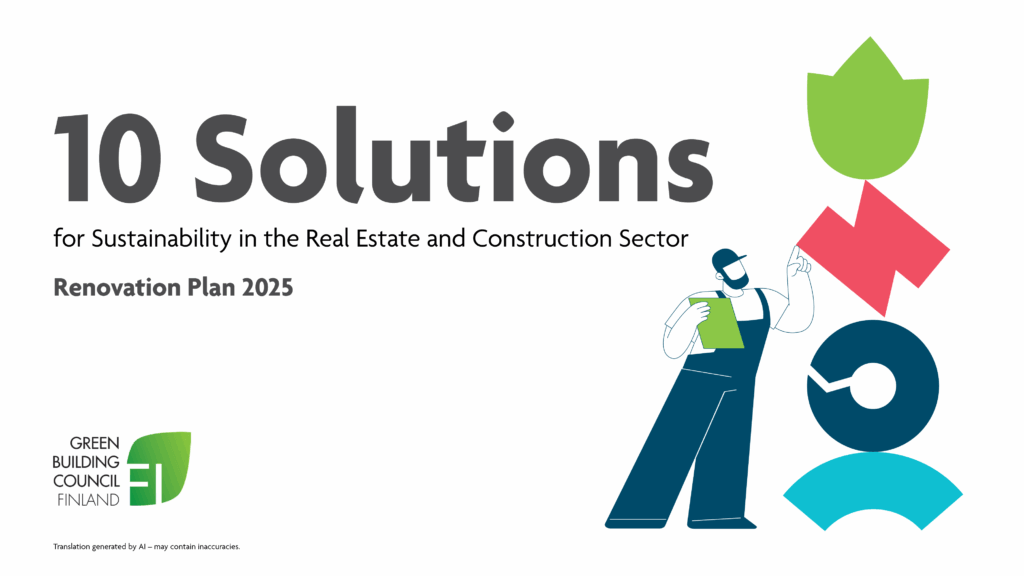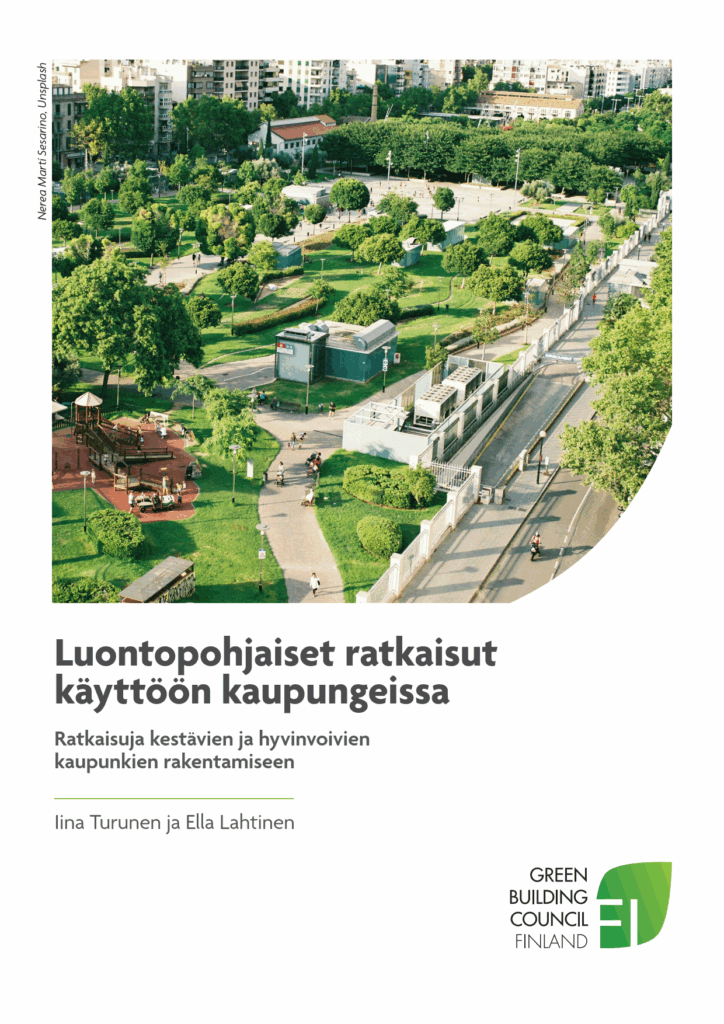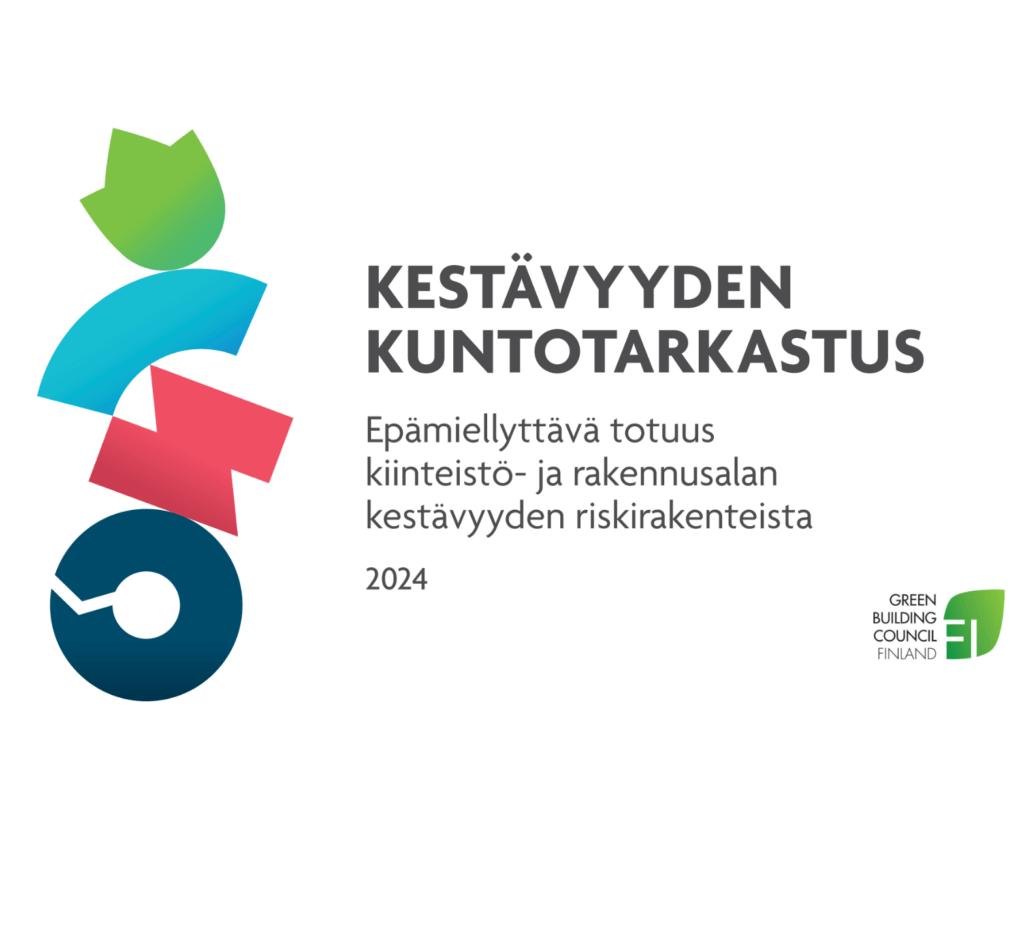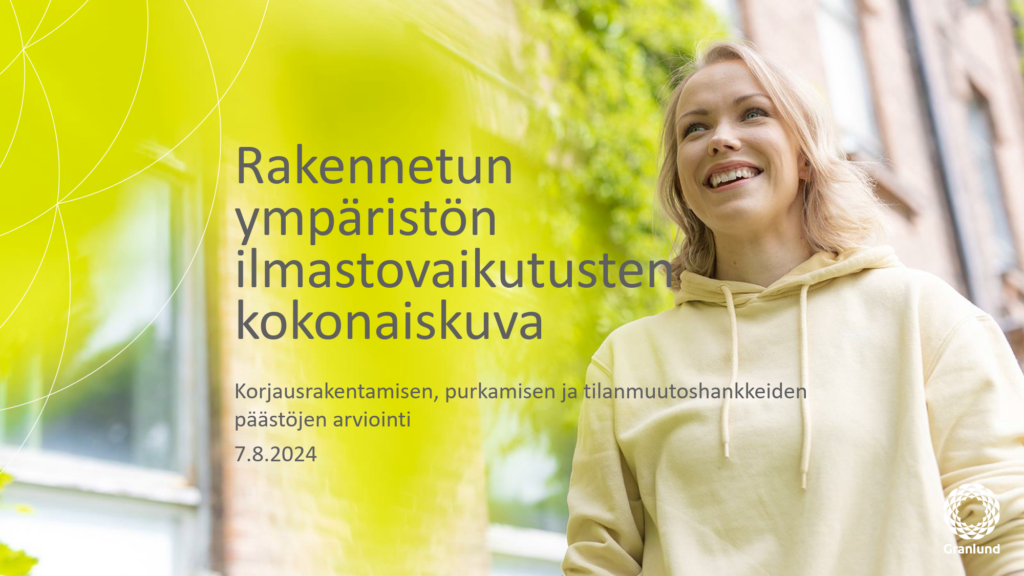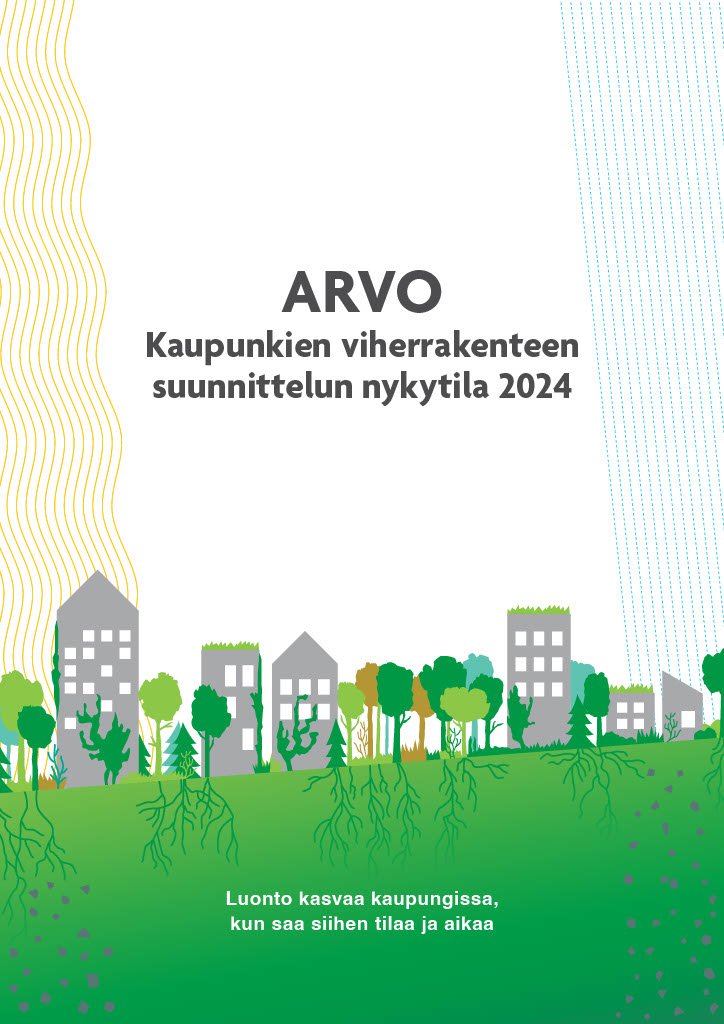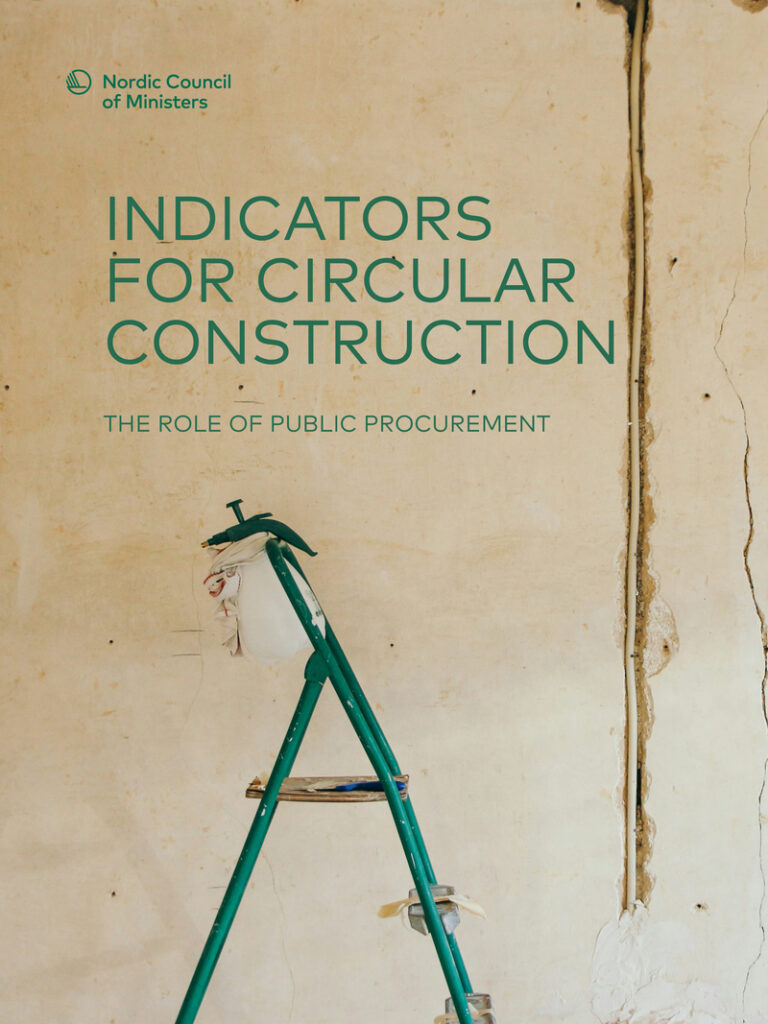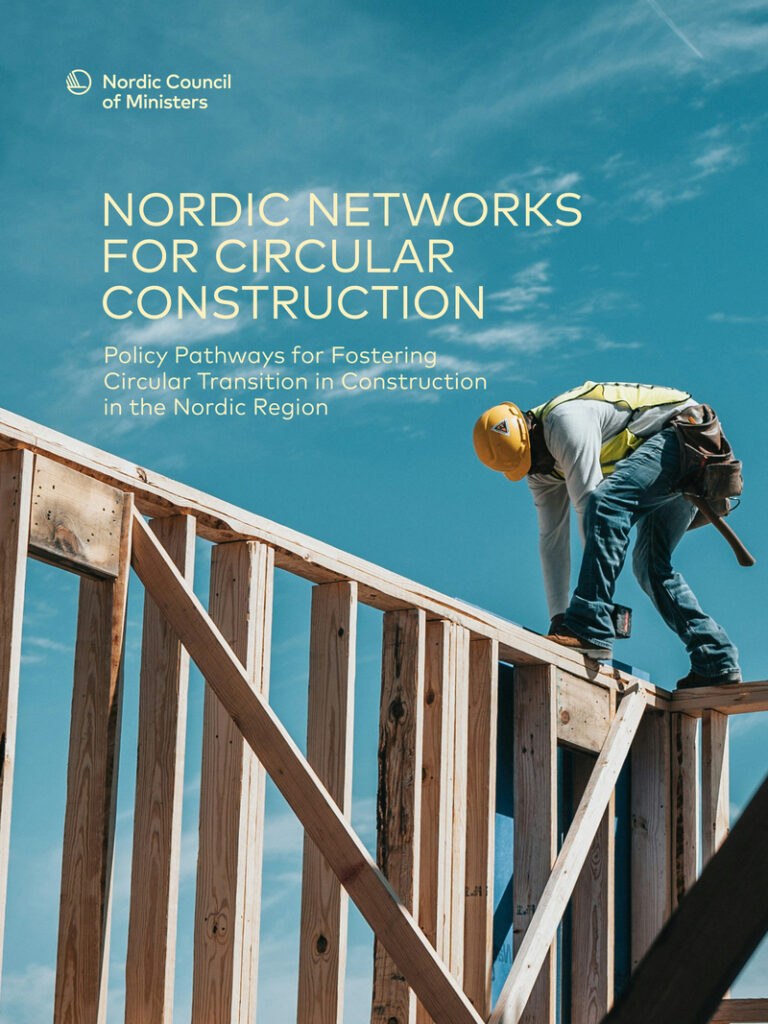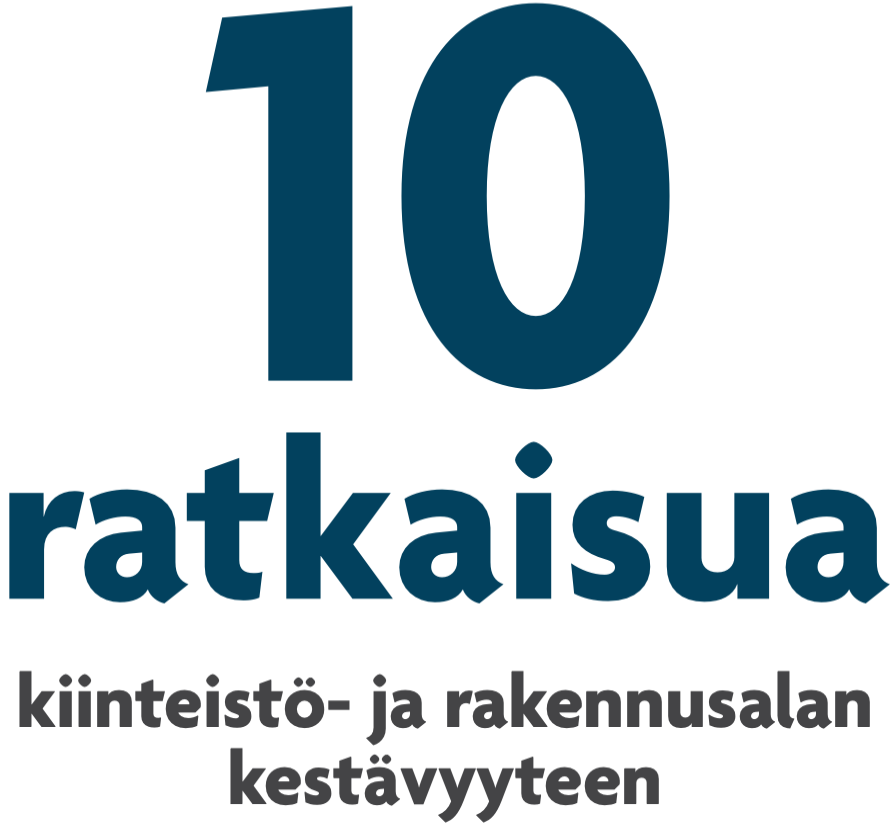Lehdistötiedote
World Green Building Council (WorldGBC) julkaisi uusimman raportinsa ”Beyond the Business Case” YK:n Ilmastokokouksessa, COP26:ssa Glasgow’ssa 4.11.2021.
Ilmastonlämpenemisen lämpenemisen rajoittamiseksi enintään 1,5 asteeseen, on rakennusten päästöt maailmanlaajuisesti puolitettava vuoteen 2030 mennessä ja nettonollaksi viimeistään vuoteen 2050 mennessä.
”Vaikka ympäristötoimien kuuluisi olla kiireellisin prioriteetti rakennetun ympäristön alalla, tämä raportti ei keskity niihin”, raportissa todetaan. ”Viimeinen vuosikymmen on osoittanut, että vaikka monet johtajat ovat hyvin motivoituneita torjumaan ilmastokriisiä, tarvitaan merkittävämpi motivoiva tekijä varmistamaan muutos. Tämä tekijä on tietenkin rahoitus.”
Raportti avaa erilaisia ajureita, kuten EU taksonomia sekä ESG:n, vastuullisen sijoittamisen kasvua. Lisäksi esitellään viisi erilaista case -esimerkkiä ympäri maapallon.
WorldGBC launches Beyond the Business Case — a groundbreaking report outlining why real estate businesses can’t afford not to invest in sustainability
The World Green Building Council (WorldGBC), a global network accelerating sustainability in the built environment, has set out the updated value proposition for the international real estate sector to drive investment in sustainable real estate by launching a new flagship report ‘Beyond the Business Case’ at COP26 in Glasgow.
In the lead up to Cities, Regions and Built Environment Day at COP26 on Thursday 11 November, the report ‘Beyond the Business Case’ provides a timely and unique perspective for the real estate sector to accelerate the industry’s sustainability transformation by capitalising on the economic opportunities, addressing risk mitigation and, importantly, also embracing the social value case.
Why the built environment matters
In today’s world, particularly following the impact of the COVID-19 pandemic, there are clear drivers for the social value case across the built environment, presented at three scales of action: from health and wellbeing at the building occupant level, to community benefits and jobs at the local level, to international human rights and welfare recognition throughout the construction lifecycle and materials supply chain.
A powerful and up to date business case is essential to drive investment into green, sustainable buildings. With the built environment being responsible for 75% of annual global greenhouse gas emissions, and real estate alone accounting for 37%, plus 40-50% of global resources extraction, the critical requirement for enhancing sustainability in the sector is clear. For the development of new buildings and the required upgrades of existing ones, the financial input will be monumental — new sustainable buildings alone are set to represent a $24.7 trillion investment opportunity in emerging markets alone by 2030, so tackling barriers to mass market engagement is essential.
Going beyond the business case
Beyond the Business Case also outlines reasons for the optimal economic opportunity from green assets, including greater access to investment, corporate reputation, higher asset value and investment resilience, lower build and operational costs and return on investment through occupant productivity.
The report demonstrates, through an analysis of climate-science aligned 2050 scenario modelling, that there is a stronger value proposition for investment in sustainable and quality real estate today. This is presented against a backdrop of recent trends. For example, wellness in real estate is projected to rise to a $198 billion industry in 2022 — heightening demand for healthy, sustainable spaces. All of these findings are supported by evidence-based research through innovative case studies which bolster both the current, and future, business case for a sustainable built environment.
By proving this revised business case for investments in green, sustainable real estate assets, WorldGBC and its network will continue to enable widespread action across the building and construction value chain.
Leadership and collaboration from across the globe
This report has been developed by the WorldGBC global network, with collaboration and support from a development task force including the Laudes Foundation, WSP, Johnson Controls, Buro Happold, Saint-Gobain, Mott Macdonald, Foster + Partners, Kingspan, SOM, CBRE, Lendlease, Institute for Human Rights and Business and our member Green Building Councils around the world.
Cristina Gamboa, CEO, World Green Building Council, said:
“As WorldGBC prepares for the dedicated Cities, Regions and Built Environment day at COP26, we recognise the need for a compelling value proposition for all actors across the global real estate sector, as well as the increasing importance of social value. People must be put at the heart of the business case, particularly in light of the COVID-19 pandemic, which continues to challenge us.
“Real estate alone accounts for 37% of annual global greenhouse gas emissions. Therefore, our report inspires urgency — but urgency with optimism. We champion an achievable transformation that brings future climate scenarios into today’s business decision making, demonstrating total clarity on why no business can afford not to embrace sustainability in real estate.”
David Symons, UK Director of Sustainability at WSP, said:
“From zero carbon offices in London and climate-ready schools in Lagos, to well-ventilated homes in Vancouver and healthy hospitals in Victoria – the case for green, healthy buildings is clear across the world.
“COP26 provides the perfect opportunity to bring this business case for sustainability to the fore and WSP is delighted to have supported WorldGBC on its development. The future scenario modelling we undertook shows the impact climate change and health will have on real estate assets and why a sustainable built environment makes financial and ethical sense.”
James Drinkwater, Head of Built Environment, Laudes Foundation, said:
“To ensure our economy transforms at the speed we need it to, the narrative can’t focus on why protecting people and the planet is a ‘nice to have’ – it must be clear that any less is untenable. Laudes Foundation is proud to support this important new WorldGBC report, which establishes a bolder narrative around the need for transformation in the built environment.”
Read the full report and find out more at worldgbc.org.
